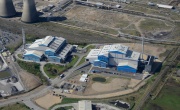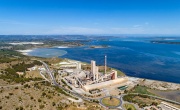UK ‘needs to manage conflicts’ between residual waste and recycling
Environmental consultancy Eunomia Research & Consulting Ltd (Eunomia) has warned that the UK could reach residual waste treatment overcapacity by 2019 and has called on government to consider how it can manage ‘potential conflicts’ with future EU recycling targets.

According to Eunomia’s Eighth Residual Waste Infrastructure Review, released yesterday (22 June), the UK currently has around 23.6 million tonnes per annum (tpa) of residual waste treatment capacity either ‘operating’, ‘under construction’, or ‘committed’ (i.e. that which has reached financial close).
These comprise 50 incinerators; 15 gasification facilities; 36 pre-treatment facilities (using either mechanical-biological treatment (MBT) or autoclave technologies); 11 Waste Incineration Directive (WID) compliant biomass facilities; and eight cement kilns processing solid recovered fuels (SRF).
Although the number of energy-from-waste (EfW) facilities has increased in recent years, there are still around 13.2 million tonnes of residual waste needing treatment.
However, the latest issue of the biannual review has shown that the facilities that are either currently operational, being built or planned and expected to be operational by 2019/20 are collectively capable of processing 23.9 million tpa of residual waste, more than the 21.6 million tonnes of waste estimated to be produced in that year (if residual waste arisings continue at their current rate).
As such, the UK could be on track to have 2.3 million tpa more treatment capacity (‘overcapacity’) than needed in that year. If the export of refuse-derived fuel is included in this calculation, overcapacity would be reached by 2018/19.
Using this methodology, the level of overcapacity then rises to 15 million tonnes in 2030/31 (or 18 million tonnes if the export of RDF is included in this analysis). However, the consultancy has said it seems ‘unlikely that the UK would ever reach such a level of overcapacity, as each time a facility begins construction in a given locale, the likelihood of nearby facilities reaching financial close falls’.
Despite this, the consultancy has previously warned that overcapacity could impact recycling rates, stating in its seventh edition of the review that the UK’s recycling rate in 2030 could be limited to 66 per cent if infrastructure construction and waste exports both proceed as expected.
Eunomia has also noted that as capacity is ‘unevenly spread’ across the UK (for example, Northern Ireland currently has no residual waste treatment facilities in operation), overcapacity may occur earlier in some geographical regions than in others.
Conflicts with recycling targets
As the European Commission is currently considering introducing a revised Circular Economy Package, which could include a requirement for member states to recycle 70 per cent of their waste by 2030 (the UK recycled 43.9 per cent in 2012), Eunomia is now calling on central government, local authorities and waste contractors to consider how they will manage potential competition between facilities and ‘potential conflicts with higher recycling targets’.
Indeed, the Local Government Association (LGA) used Eunomia’s previous manifestation of the Residual Waste Infrastructure Review to highlight in its EU Circular Economy position paper that the UK’s treatment capacity would make higher recycling targets ‘unachievable’.
It stated: ‘English local authorities have committed many hundreds of millions of pounds to underpin the delivery of waste treatment infrastructure to radically reduce landfill by 2020. This treatment capacity will process a volume of waste that will make meeting a suggested 70 per cent recycling target unachievable.
‘Unless member states’ committed investments are taken into account in target setting there is a risk that these expensive and long term facilities are made redundant leaving public authorities with large liabilities.’
Launching the eighth review yesterday, Adam Baddeley, Head of Energy at Eunomia, commented: “It is encouraging to see the LGA taking note of the concerns raised in the RWIR [Residual Waste Infrastructure Review], when others in the sector – such as the GIB [Green Investment Bank] – appear not to be doing so. However, the lessons the LGA draws from the study are not those we would encourage local authorities to adopt.
“Calling for less ambitious EU targets may seem like an obvious solution to the problem we have long been predicting, but many cheaper and more creative ways of dealing with the challenge of local authority incinerator overcapacity are available.”
Options to reduce overcapacity likelihood
Writing on the Isonomia blog, Baddeley suggested that the LGA could instead work to:
- support businesses in improving the recycling rate for other waste streams such as commercial, industrial, construction and demolition waste;
- call on central government and the GIB to support the much smaller investments needed to support the collection and reprocessing of recyclable material in the UK, making alternatives to incineration more attractive;
- support authorities that aren’t constrained by existing infrastructure to maximise their recycling, thereby taking the pressure off those that are;
- call on central government to help local authorities renegotiate incinerator contracts to enable exit from any requirements that commit them to supplying a guaranteed minimum tonnage, and/or support collaboration or trading between councils to allow waste to be matched with capacity; and
- encourage councils to step up commercial waste operations, or actively encourage local commercial waste operators to supply waste to their incinerator, to replace any shortfall in the council’s own material.
Read Eunomia’s Eighth Residual Waste Infrastructure Review or find out more about the European Commission’s Circular Economy Package.







